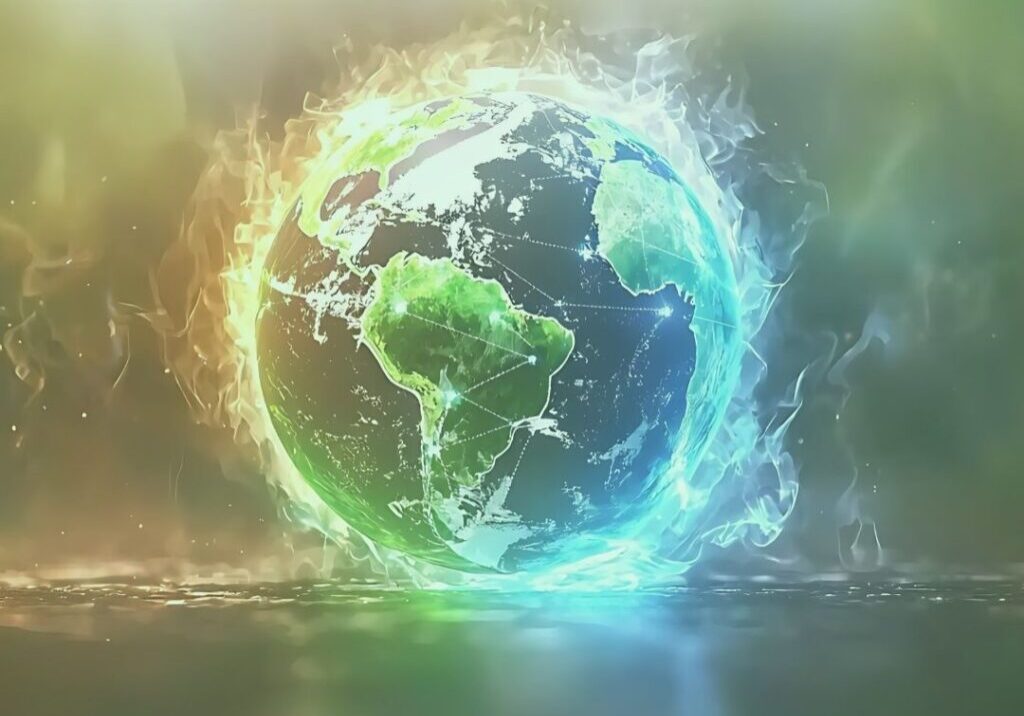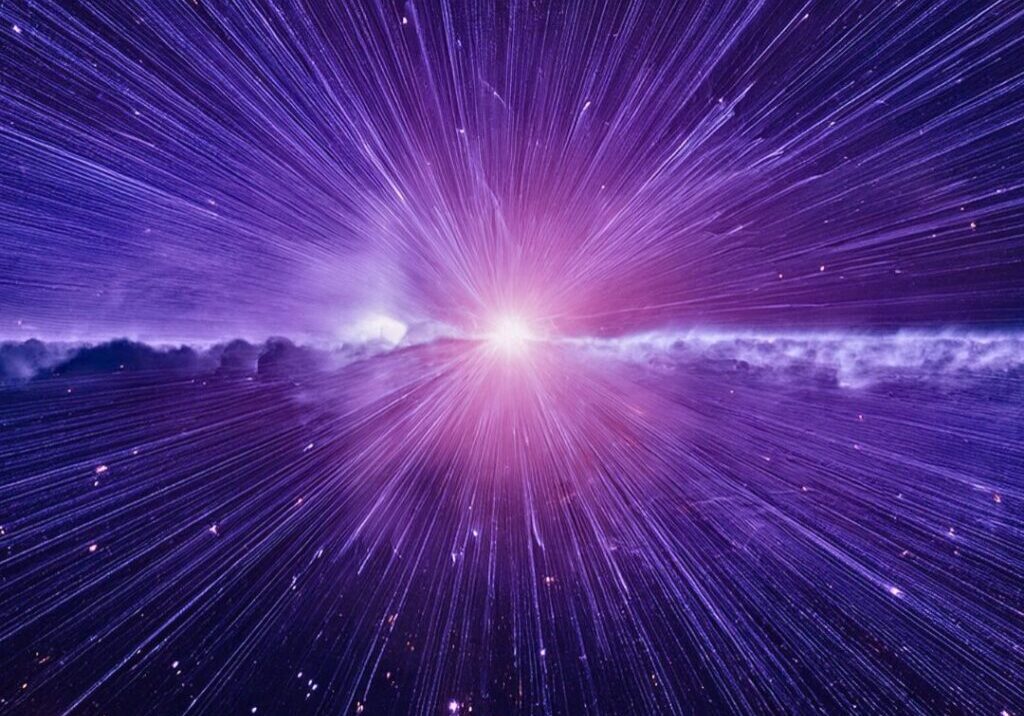Teaching Teilhardian Hope In Hong Kong
Over recent weeks we have posted a three-part blog series by Cynthia Bourgeault entitled “Teilhard for Troubled Times.” The following is a response and expansion upon some of the themes raised in that series, as well as Marty’s reflections based on his experience as a teacher of Humanities at the Hong Kong International School (HKIS).
A Response to Cynthia Bourgeault’s “Teilhard for Troubled Times“
I write as a high school humanities teacher who for more than 25 years has been on a quest to find what power in education really means in the international setting of Hong Kong. My starting point, then, in response to Cynthia’s reflections on Teilhard, is that her comments address arguably the biggest cosmological question of all: where do we find hope?
The students I teach are increasingly struggling to find hope in the 21st century, an attitude that my colleagues and I have termed the “people-planet divide.” The news regarding the climate crisis is often expressed in apocalyptic terms; meanwhile, the mental health of our students is visibly deteriorating. These are no longer debatable issues in our school community. Educational change needs to holistically address this dual crisis.
I recently asked my 15-year olds studying in my social conscience class that aims to make a difference in the world: what is the collective purpose of humankind? The clear winner: there is no collective purpose. In a cultural milieu where catastrophic biospheric disruption, rising levels of stress and mental illness, and assumed cosmic purposelessness are givens, Teilhard’s unflinching consideration of the “unresolved anguish of post-modern skepticism and despair” strikes a chord in me, for I sense that below my students’ frenetic striving for achievement is an unrelenting, if rarely acknowledged, malaise.
For the first 20 years of my teaching I answered the question of power in education through the transformative pedagogy of service learning. The progressive vision of our method, akin to Cynthia’s observations about the post-World War II consensus, was about “making a difference.” Drawing upon Teilhard, I can say that I was privileged to teach and live out of “a zone where people have eyes to see, hands to help, and hearts to love.”
Yet Teilhard warns, “But how precarious that habitation is!” My own version of this caveat is a student’s question at the end of a service trip about ten years ago, “But how do we keep the fire burning?” How do we continue to find the inner energy to fight for love and justice? I’m embarrassed to say that my only answer at that point was . . . to go on another service trip to get re-enthused. The real question that I needed to face, however, was: when the chips are down, when elections sweep reactionary forces into power, when climate change appears irreversible, when mental health deteriorates, where do we find hope?
Teilhard’s and Cynthia’s answer is to find the fire within, the bush that burns but is not consumed, the pillar of fire that leads through the wilderness, the Pentecost tongues of flame. Yet rather than being merely lofty incendiary metaphors for otherworldly abstractions, they serve as pointers, I have come to understand, of embodied experiential realities. Teilhard taught that Christic energy can be found anywhere and everywhere – in matter as well as in consciousness, in body and in mind, in cosmic order and environmental despair, in hope and in darkness.

Monument to the Sacred Heart of Jesus Christ, in Almada Portugal.
With humans as the leading edge of evolution, however, the most conspicuous place for this cosmic energy, Teilhard and Cynthia assert, is in the human heart. If humans have three centers of intelligence – the body, mind, and heart – then the tripartite heart is the center of the center, sustaining our physical, emotional, and spiritual life. This “living reality” for Teilhard, the Jesuit priest, had a name: the radiant heart of Christ. As a humanities teacher in a multicultural setting, my search for power in education, then, has brought me to this question: how can I bring this radiant energy to my students?
I find myself drawn to and energized by Cynthia’s comment that “every new benchmark of consciousness as it manifests on earth is accompanied by . . . the emergence of a higher, more articulated physical form . . . of a new organic body of humanity, a mystical body of humanity [emphasis hers].” Rather than just saving the world through my social conscience classes, a daunting Sisyphian task, the call here is paradoxically to something humbler and closer to home – the physical body – yet with cosmic resonance.
In the last several years in my religion classes, then, I have slowly moved to including nutrition, breathing practices, yoga, conscious walking, calligraphy, mandala making, ikebana, etc., in my curriculum. I have gradually gained the confidence to teach how to exercise the underutilized intelligences of the body and the heart, while relaxing the overtaxed mind muscle. Not one student has expressed any concerns about this approach to me. While I can never remember a student voicing affirmation when I ask them to write a paragraph, the occasional student will come into my religion class and plead, “Can we meditate today?” I interpret this not so much as a diversionary tactic but rather a deeper cellular response breaking through into my students’ conscious minds asking for what the body yearns to do – to reach out, connect, touch, love.

HKIS student practicing stillness
Once this paradigm shift from saving the planet to attending to the self has been adopted, there begins, I would offer, a wooing of the holistic “I” into a new mode of being that is intrinsically rewarding. In other words, attending to inner disharmony in the physical and emotional self intuitively feels like the right path. Transforming the planet, then, includes the necessary, and joyful task, of upgrading Teilhard’s “individual” to the “person.” This is the “more articulated form” that is capable of bearing the love radiance of the sacred heart.
As Cynthia so profoundly explains, it is simply the nature of love to flow. Harmonization of the physical-emotional self brings about an energetic rising tide that overflows into the noosphere, bringing each of us into a higher collectivity. Every enflamed heart can make a contribution to this rising energy, placing our inner fire in service of the arrow of evolution towards a greater unified complexity. Such an understanding is, by definition, a mystical leap, for on the visible level alone setbacks appear legion. Yet understood mystically, we can join the conscious circle of humanity that carries “deep hope over deep time.” We can’t but help join this mystical body of humanity.

HKIS students visiting a Chinese orphanage
In my own teaching journey, then, I now have an answer to my student’s question about how to keep the fire burning. I need to provide teaching and training to my students in spiritual practices that direct their attention to their individual bodies and hearts. To my great surprise, most of my students find this going inside to be relatively easy compared to the arduous years of schooling required for mental skill development, giving credence to Cynthia’s claim that the heart is already fully formed, a “perfect hologram of the divine heart” (see resource link to The Heart of Centering Prayer by Cynthia Bourgeault below.)
At this point, then, I continue to teach courses that aim to make a difference in the world, but I now understand that keeping that inner fire burning is the one needful task. My greatest pedagogical responsibility, in this present moment and for the sake of deep time, is providing the space and training for students to access, in their own manner and tradition, the radiant heart of Christ within. My long journey has come to the simple conclusion that the inner traditions have had it right all along: overcoming our human-created crises, including the people-planet divide that afflicts my students, means enlivening each human heart. Where do we find hope? As Blaise Paschal stated,
“The heart has its reasons that Reason does not know. It feels a thousand things. It is the heart that feels God, not Reason. This then is perfect faith: God felt in the heart.”
FOLLOW-UP RESOURCES:
- Cynthia Bourgeault expands on her suggestion that the human heart is effectively a “perfect hologram of the divine heart” in her book The Heart of Centering Prayer. You can find more information and related resources for the book here.
- Learn more about social conscience education here, and how this learning approach provides enriching and uplifting opportunities and experiences for students and educators. In addition, Marty and his colleague Mike Kirsten offer a revealing and inspiring talk on Social Conscience in education at the TEDxHongKongED. Watch here:
- You can read about Marty’s process of integrating a spiritual practices project into the World Religions curriculum, and some of his students’ very positive experiences with the project here.
- As part his World Religions curriculum Marty also provided his students with an introduction to the Wisdom Tradition, and the transformative practice of balancing the three centers of intelligence: body, mind, and heart. He outlines this teaching here.
- In exploring the essential relationship of Science and Religion, Marty was inspired to introduce his students to the writings and vision of Pierre Teilhard de Chardin. Marty shares his introduction to Teilhard here.
 View print-friendly version
View print-friendly version
1 Comments
Related Posts

The Earth Groans, AI Grows: Who Guides the Flame?
In this critical moment of planetary history, where ecosystems collapse, artificial intelligence proliferates, and human meaning trembles on the edge of uncertainty, we are faced with a profound question: What kind…


Hello, I enjoyed Marty’s article so much and am so pleased that there are people such as him teaching children the values that are so vital but so lost in our modern world. As a 60 year old I can only reflect how different life could have been if there had been a teacher with such an inspiring attitude and knowledge. I hope that the seeds planted will continue to grow into the future.
Thanks You
Gary